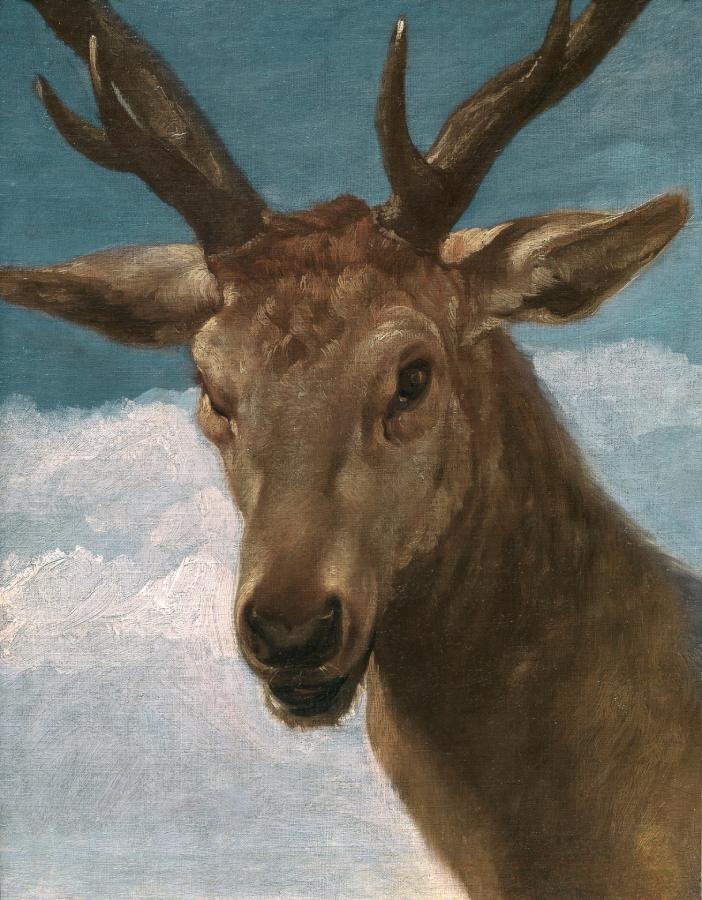Velázquez, Diego (1599-1660)
Cabeza de venado (Head of a Deer)
1626–1636
Oil on canvas, 66 x 52 cm
Museo del Prado, Madrid
While there is no documentation indicating this work was made for the Torre de la Parada, its subject suggests a relation to paintings intended for that hunting lodge. Unlike other painters, Velázquez’s stylistic evolution cannot be described in linear terms, as many of the characters in his painting appear throughout the greater part of his career. Thus, historians have serious difficulty dating the works that are only minimally documented. The present stag’s head is a good example, as it has been dated between 1626 and 1636. Its quality, subject matter and authorship suggest that it may have been intended for one of the Royal Seats, and historians have pointed out the possibility that it may be the same work listed in the 1637 inventory of the Alcázar Palace in Madrid, which states: it was killed by our lord the king, Philip the Fourth in the year 1626. That same work is described in different inventories through 1747 and is thought to have left the Royal Collections because it was severly damaged in the Alcázar fire of 1734. The reference to 1626 has led those who identify the present work with the one listed in the inventory to date it from that year, although some believe this may have been a simple error of transcription and that the real date was 1636. Others affirm that the work listed with that date corresponds to the Stag Horn preserved by Patrimonio Nacional. Whatever its year and origin, this is a painting of considerable quality, whose freshness, immediacy and naturalism have sometimes led it to be called a portrait of an animal. Its subject matter was quite common in the Spanish Court, as almost all of this country’s monarchs were passionate about hunting. In this sense, we should mention the abundance of hunting themes related to art and even to courtly poetry, especially in the works that decorated the Torre de la Parada, or entire books such as Anfiteatro de Felipe el Grande, whose author, José de Pellicer, praised the king for being capable of killing a bull in Madrid’s Plaza Mayor with a single shot from his blunderbuss (Text from Portús, J.: Velázquez. Guía, Museo del Prado, 1999, p. 152).
